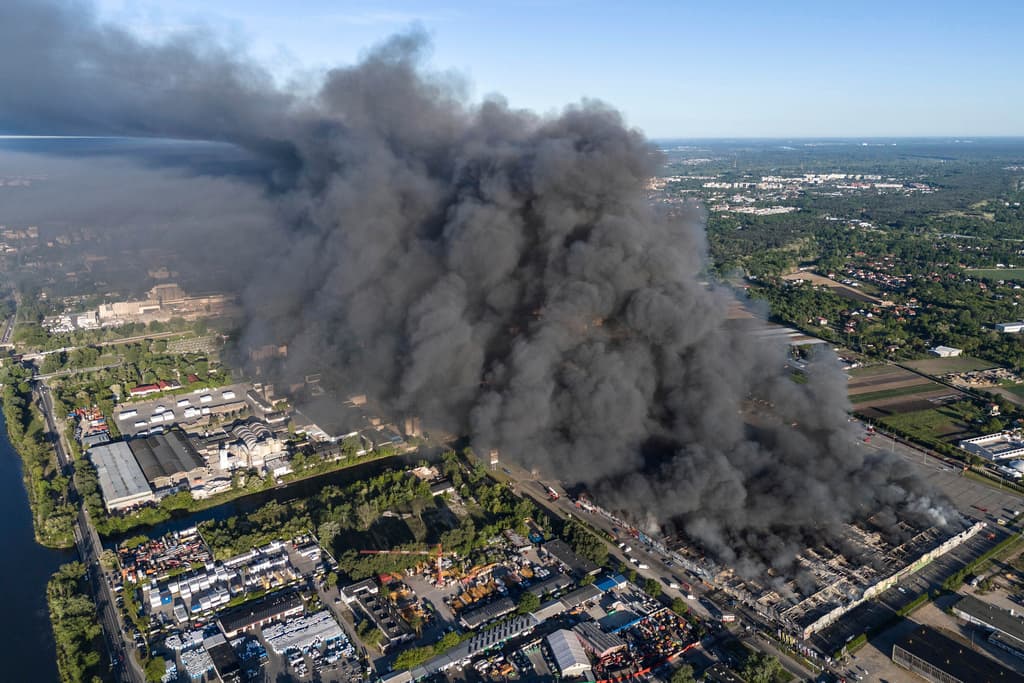‘The Baltic Sea Should Not Turn Into Putin’s Playground,’ Sweden’s Military Chief Warns Amid Saber-Rattling From the Kremlin
For some observers, the verbal aggression, the official denials, and the cat and mouse games at internationally recognized borders are reminiscent of the time before Russia’s full-scale invasion of Ukraine in February 2022.

Moving under the light of a full moon, Russian patrol boats yesterday removed half of 50 navigational buoys from a border river separating Estonia and Russia. The day before, Russia’s Defense Ministry took down a notice that Russia plans to unilaterally change its Baltic Sea borders with Lithuania and Finland. The draft decree proclaimed: “The state border of the Russian Federation at sea will change.”
In the air, the number of NATO jets scrambling to intercept Russian planes approaching NATO Baltic airspace is up by about 25 percent this year, Reuters reports from Berlin. Earlier this spring, GPS jamming, believed to be from Russia, diverted Finnair flights and forced the closure for repairs of Estonia’s airport at Tartu.
And on airwaves of Russia’s state TV, Kremlin propagandists train their verbal cannons on the nations of the Baltic Sea.
“We must use this moment to teach Sweden a lesson, so that 200 years from now they will still collectively say, ‘Thank you very much,” Margarita Simonyan said Sunday on Russia-1 TV. “Let them drink their Tuborg beer, fry their meatballs…They’ll sit quietly and peacefully and mind their own business. Wouldn’t that be great?”
On Wednesday, Kremlin spokesman Dmitry Peskov issued a statement that used arguments heard from the Kremlin prior to their invasion of Ukraine. Noting that the “political situation” has “changed significantly” since the Soviet-era borders were drawn, he said: “You see how tensions are escalating, what the level of confrontation is, especially in the Baltic region. This requires our agencies to take corresponding steps to ensure security.”
For some observers, the verbal aggression, the official denials, and the cat and mouse games at internationally recognized borders are reminiscent of the time before Russia’s full-scale invasion of Ukraine in February 2022. After watching 25 months of Russia’s onslaught against that Western neighbor, Russia’s Baltic Sea neighbors are pushing back.
Sweden, the 18th-century enemy of Tsarist Russia, is taking the lead. Two months ago, Sweden joined NATO, ending two centuries of neutrality.
On Wednesday, the Swedish prime minister, Ulf Kristersson, announced $7 billion in military aid over three years to Ukraine. Measured in terms of GDP, this would be equivalent to America committing to giving $335 billion in military aid to Ukraine.
“Ukraine’s cause is Sweden’s cause,” Mr. Kristersson said in an English-language video addressed to the Ukrainian people. “You are fighting not only for your freedom and security but also ours.”
Turning to the border issue, he told TT news agency: “Russia can’t unilaterally decide on new borders.” The head of Sweden’s armed forces, General Per Micael Bydén, said Vladimir Putin is reviving Russia’s centuries-old ambitions to seize Gotland, Sweden’s strategic island in the middle of the Baltic.
“Putin has both eyes on Gotland,” General Bydén told German TV network RND. Located midway between Sweden’s mainland and Latvia, the island is only 200 miles north of Baltiysk, home port of Russia’s Baltic Sea fleet. “Putin’s goal is to gain control of the Baltic Sea. Who controls Gotland controls the Baltic Sea…the Baltic Sea should not turn into Putin’s playground where he intimidates NATO members.”
All the nations of the Baltic Sea region are increasing their military budgets, putting them on track to meet or surpass NATO’s goal of defense spending of 2 percent of GDP. This year, Poland plans to spend four percent of GDP, surpassing America’s three percent level.
Poland announced last week that it would spend $3.5 billion to reinforce its eastern borders with Russia and its satellite Belarus. This includes a $1 billion contract to acquire four airstats from a consortium led by Raytheon. These massive blimps would hover around the clock, providing early warning radar coverage of threats from the east. Poland’s defense minister, Władysław Kosiniak-Kamysz, reports that so far this year 14,000 Middle Eastern migrants tried to enter Poland from Belarus without visas.
Finland closed all its land crossings with Russia last year after 1,300 migrants from third countries were expelled from Russia and entered Finland without visas. Today, Finland’s parliament is debating a bill that would allow border agents to block and push back asylum-seekers at its land borders.
Starting next Wednesday, Norway will stop admitting Russian citizens with tourist visas. This comes after Norway has been plagued by cases of Russian spies.
All the countries of the Baltic region now are on the lookout for saboteurs. Over the last week, Poland arrested 12 people — Poles, Ukrainians and Belarussians — on suspicion of preparing acts of sabotage. On May 12, the largest shopping center at Warsaw, Marywilska 44, was reduced to ashes in a late night fire. “We are examining the threads,” Prime Minister Donald Tusk told reporters Monday. “It is quite likely that the Russian services had something to do with the Marywilska fire.”
Poland’s eastern neighbor and historic ally, Lithuania sees as a threat Mr. Putin’s trial balloon about moving its sea borders. The Baltic nation’s foreign ministry called it “a deliberate, targeted, escalatory provocation to intimidate neighboring countries.” Germany’s defense minister, Boris Pistorius, who was visiting Lithuania on Wednesday, said “it appears to be another example of the thoroughly perfidious kind of hybrid warfare that Putin is practicing.”
Finnish military historian Emil Kastehelmi agrees, posting on X: “This was not ordinary diplomatic interaction but deliberate provocation, a calculated maneuver. Perhaps Russia wanted to signal that it does not fear the West, and that NATO membership doesn’t mean a country is safe from arbitrary territorial demands.”
Across the Gulf of Finland, at Narva, Estonia’s border city, relations with Russia were already frosty before the Russians seized the 24 navigational buoys. A once-busy road bridge over the Narva River is now blocked with white cement anti-tank pyramids. Only the pedestrian bridge links Narva and its Russian sister city, Ivangorod.
Putting his finger on the city’s existential nervousness, Rutgers professor Alexander Motyl wrote an essay 16 years ago. It was headlined: “Would NATO Defend Narva?”

